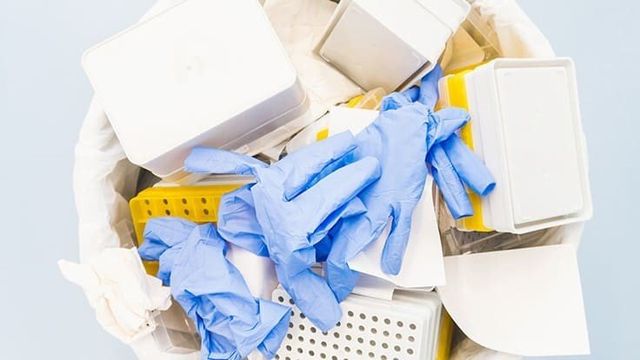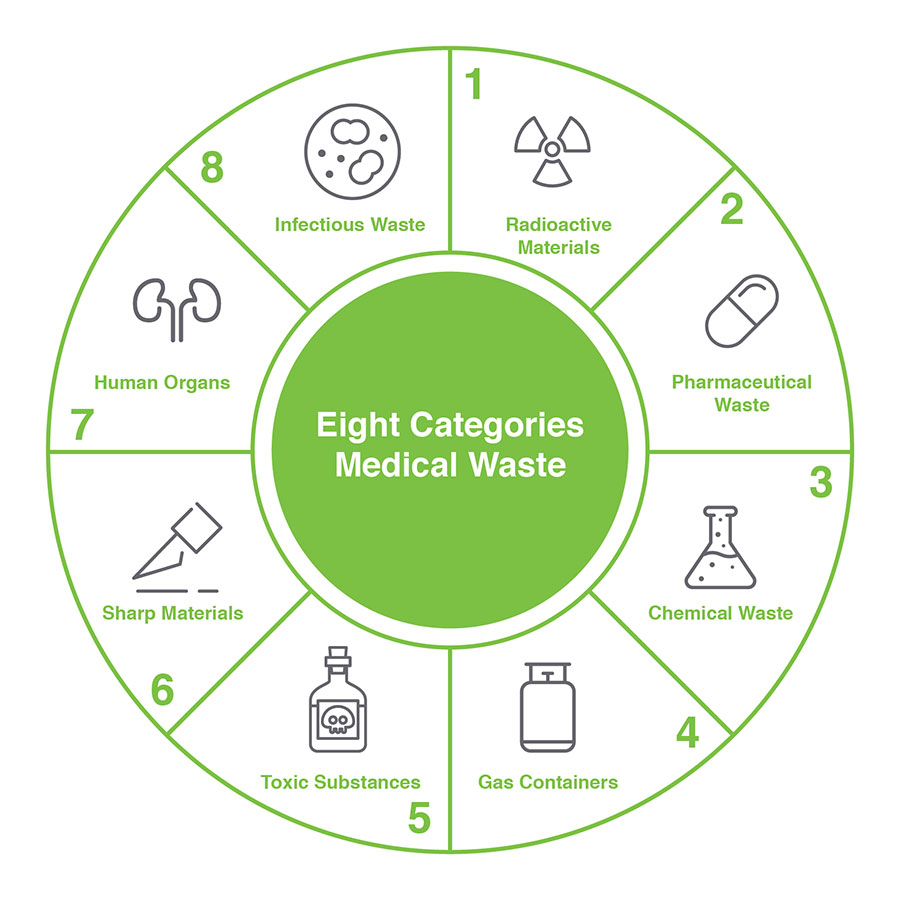Safety and security First: Your Overview to Accountable Medical Waste Removal Services
Safety and security First: Your Overview to Accountable Medical Waste Removal Services
Blog Article
Stay Ahead of Rules: Expert Suggestions on Medical Waste Disposal
In a globe where the health care sector is constantly advancing, it is imperative for medical facilities to remain in advance of guidelines when it involves the correct disposal of medical waste. With stringent standards and regular regulative adjustments, it can be challenging to browse the intricacies of this procedure. With expert guidance, centers can make certain conformity and minimize dangers linked with inappropriate waste disposal. From recognizing the different groups of medical waste to carrying out the right collection and segregation approaches, this discussion will supply actionable pointers and important understandings to help facilities stay ahead of policies in the ever-changing landscape of medical waste disposal.
Recognizing Medical Waste Categories
Recognizing medical waste classifications is essential for appropriate disposal and administration in medical care facilities. Clinical waste refers to any waste created by medical care tasks that might present a threat to public wellness or the atmosphere. It is vital to classify medical waste accurately to guarantee its safe handling, transportation, disposal, and therapy.
There are numerous categories of medical waste that medical care centers need to be aware of. One of the most usual groups include infectious waste, pathological waste, sharps waste, pharmaceutical waste, and chemical waste. Each group has specific guidelines and policies for its correct monitoring and disposal.
Transmittable waste includes materials polluted with blood or various other physical liquids, such as gloves, gowns, and lab societies. Pathological waste refers to human tissues, body organs, or body parts that need special delivery and disposal. Sharps waste includes used needles, syringes, and various other sharp items that can cause injury and send infections. Drug waste comprises run out, unused, or polluted medicines that require careful handling and disposal. Last but not least, chemical waste consists of solvents, disinfectants, and various other chemical materials made use of in health care centers.
Remaining Up-To-Date With Regulatory Changes
Remaining present with regulative modifications is crucial for medical care facilities to make sure compliance and proper monitoring of medical waste disposal. medical waste removal services. With laws constantly progressing, it is crucial for health care centers to stay up-to-date to prevent fines, fines, and prospective injury to the environment and public health
To remain ahead of regulatory adjustments, medical care centers need to establish a system for tracking and monitoring updates. This can be done by subscribing to regulatory newsletters, attending meetings and workshops, and actively joining market organizations. Additionally, facilities need to assign a team member or team accountable for remaining notified and disseminating information to appropriate stakeholders.
Routine communication with governing companies is additionally crucial. Healthcare facilities need to develop connections with regional, state, and government companies to ensure they recognize any kind of adjustments in laws that may influence their waste administration methods. This can be done via routine conferences, involvement in public comment periods, and proactive engagement with regulatory firms.
Moreover, medical care facilities must take into consideration partnering with waste administration business that focus on clinical garbage disposal (medical waste disposal services with WasteX). These business are typically skilled in the most up to date regulations and can supply guidance and assistance to make sure conformity
Carrying Out Correct Collection and Segregation Methods
To efficiently handle medical waste disposal, health care facilities have to establish appropriate collection and segregation approaches according to governing guidelines. Applying these approaches makes sure the secure handling and disposal of possibly dangerous materials, safeguards the atmosphere, and lessens the risk of infections and injuries to health care workers and the general public.
Appropriate collection and segregation approaches include using marked containers and labeling systems. Healthcare facilities should provide clearly classified containers for various kinds of clinical waste, such as sharps, contagious waste, pharmaceutical waste, and non-hazardous waste. These containers need to be color-coded and plainly marked to stay clear of confusion and promote easy identification.
Additionally, health care centers ought to educate their personnel on the right procedures for collecting and setting apart clinical waste. This consists of educating them on the different types of waste, the suitable containers to utilize, and the significance of complying with guidelines and standards. Normal training sessions and refresher course training courses need to be conducted medical waste disposal services with WasteX to guarantee that personnel continue to be current on best practices.
Furthermore, health care facilities need to develop a system for routine collection and disposal of medical waste. This may entail partnering with qualified waste management firms that concentrate on clinical garbage disposal. These business will certainly make sure that the collected waste is carried and taken care of in compliance with governing demands.
Picking the Right Disposal Methods

Incineration is among the most common and efficient techniques for taking care of specific sorts of clinical waste, such as pathological waste and sharps. It involves the regulated combustion of waste at high temperatures, reducing it to ash. Nevertheless, incineration can release hazardous contaminants into the air and contribute to air contamination.

Chemical treatment includes the use of chemicals to disinfect and reduce the effects of the waste. Microwave treatment utilizes microwave power to warm and disinfect the waste.
Making Sure Conformity Through Paperwork and Training
After meticulously considering the appropriate disposal approaches for medical waste, healthcare facilities need to guarantee conformity with laws and decrease ecological influence by carrying out effective documents and training procedures. This action is important in keeping a sustainable and safe environment for both medical care employees and the public.
Health care employees who manage clinical waste should get suitable training on waste partition, managing, and disposal procedures. By giving extensive training, medical care centers can equip their staff to make informed choices and decrease the danger of inappropriate waste disposal.
Final Thought
To conclude, staying in advance of regulations in medical waste disposal is crucial for medical care centers. medical waste removal service. Understanding the various groups of clinical waste, remaining updated with governing changes, executing appropriate collection and partition methods, selecting the appropriate disposal techniques, and making certain compliance via read here documentation and training are all important steps. By complying with these guidelines, healthcare organizations can successfully dispose and manage of clinical this waste in a liable and risk-free fashion
From recognizing the different categories of clinical waste to executing the appropriate collection and partition techniques, this conversation will offer workable ideas and beneficial understandings to help facilities stay ahead of policies in the ever-changing landscape of clinical waste disposal. - medical waste disposal services with WasteX
The most common groups include transmittable waste, pathological waste, sharps waste, pharmaceutical waste, and chemical waste. Healthcare centers ought to provide clearly identified containers for various types of clinical waste, such as sharps, infectious waste, pharmaceutical waste, and non-hazardous waste. Health care facilities must develop a detailed system to videotape and track all facets of clinical waste disposal, including types of waste generated, quantities, and disposal methods utilized. Health care workers who deal with medical waste ought to get proper training on waste segregation, taking care of, and disposal treatments.
Report this page